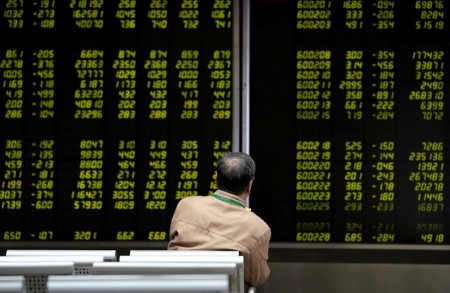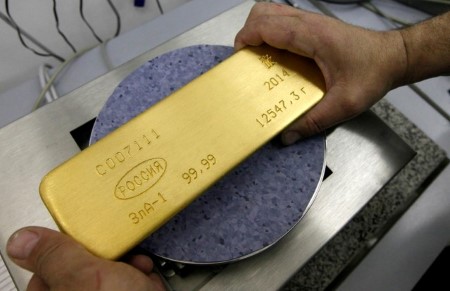NEW YORK – Global equity markets lost ground on Monday as traders remained cautious amid rising geopolitical tensions and uncertainty over the US presidential election, helping to push gold futures to new highs.
The Israeli military is continuing its attacks against Lebanon’s Hezbollah militant group, with hundreds of Beirut residents fleeing their homes late on Sunday as explosions rocked the Lebanese capital.
Gold prices surged to a record high on Monday and were little changed at $2,719.33 an ounce. US gold futures settled 0.3% higher at USD 2,738.9.
The benchmark S&P 500 and Dow finished lower, with defensive stocks including real estate and healthcare among the leading drags. The Nasdaq closed slightly stronger, with Nvidia finishing at a record high, ahead of a busy week for corporate earnings.
The Dow Jones Industrial Average fell 0.80%, to 42,931.60, the S&P 500 fell 0.18% to 5,853.98 and the Nasdaq Composite rose 0.27% to 18,540.01.
The European shares index lost 0.66%, while MSCI’s gauge of stocks across the globe fell 0.37%. Overnight in Asia, MSCI’s broadest index of Asia-Pacific shares outside Japan closed 0.5% lower.
“There’s just tension around the earning season kicking off in earnest and then, of course, the elections two weeks away even though we haven’t had the typical anxiety over elections that we normally see in September and October,” said James St. Aubin, chief investment officer at Ocean Park Asset Management in Santa Monica, California.
Oil prices settled up nearly 2% after a more than 7% drop last week. Brent crude futures settled up 1.68% at USD 74.29 a barrel, while US West Texas Intermediate crude futures were 1.94% higher at USD 70.56 a barrel.
Markets are pricing in a 89.3% chance for a cut of 25 basis points (bps) at the Fed’s November meeting, with an 10.7% chance of the central bank holding rates steady, according to CME’s FedWatch Tool. The yield on benchmark US 10-year notes rose 11.9 basis points to 4.194%.
The dollar climbed, buoyed by a rise in US bond yields. The euro was down 0.46% at USD 1.0815, while the pound weakened 0.51% to USD 1.2982. Against the Japanese yen, the dollar strengthened 0.86% to 150.79.
The European Central Bank (ECB) last week cut rates for the third time this year. Data on Monday showed German producer prices fell more than expected in September.
The dollar index, which tracks its performance against a basket of currencies including the yen and the euro, rose 0.49% to 103.97.
“Between the combination of escalating or still-high Middle East tensions, and we’re only a handful of days away from the (U.S. election), it could be that the market is getting nervous ahead of that and people are squaring some of their positions,” said Wasif Latif, president and chief investment officer at Sarmaya Partners.
(Reporting by Chibuike Oguh in New York; editing by Tomasz Janowski and Stephen Coates)







 DOWNLOAD
DOWNLOAD













